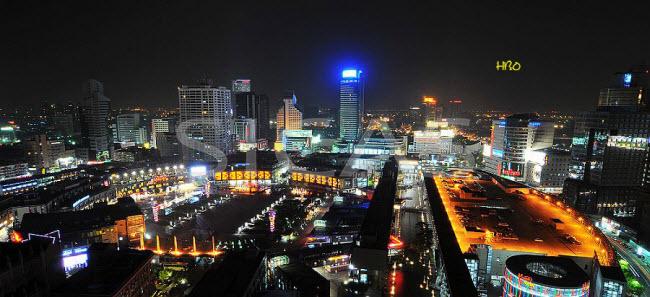Historical and cutural relics
Baoguo Temple
Baoguo Temple is a thousand-year-old renowned temple and one of the first cultural relic sites designated to be specially preserved in China. It is situated at the foot of Mount Feishilin in Jiangbei District of Ningbo City, thirteen kilometers away from the downtown. The Grand Hall in Baoguo Temple is one of the oldest and best-preserved wooden structures in South Yangtze region of China, invaluable to the nation's architectural studies.
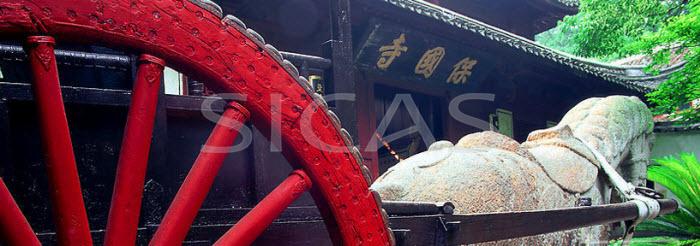
Chenghuang Temple
Ningbo Chenghuang Temple is popularly called Old Chenghuang Temple. It was built by Zhu Yuanzhang, an emperor of Ming Dynasty. The whole construction is of peculiarity consisting of Menqian Zhaobi Gongqiang (Arched Gateway with an opposite Screen Wall), Damen Mingtang (Bright Hall), Yimen Xitai ( Yimen Stage), Qian Dian (Front Hall), Hou Dian (Back Hall), and its total construction area is 4,700 sqaure meters, one of the biggest Chenghuang temples in China.
The style of the construction is the mixture of the best construction from Ming and Qing dynasties. In Ningbo, it is the first selected tourist attraction and place for businessmen from different parts of the country and has been prosperous since Ming Dynasty. Over more than ten years of development or construction, the temple area now has the street of new temple and old temple, food city, Guotai handicraft, and a mall and the Shopping Centre of Asia with a planned area of 100,000 square meters and a construction area of 70,000 square meters. The temple has become a shopping centre of both dining and touring in the downtown area.
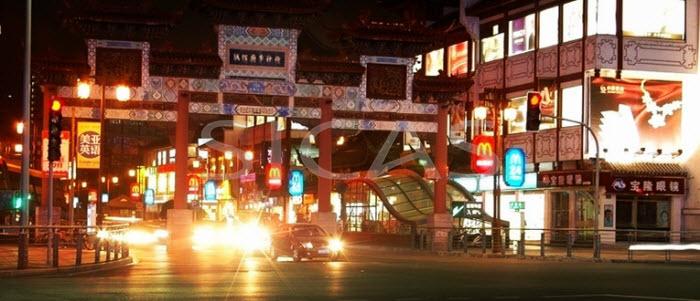
Tiantong Temple
Tiantong Temple, 25 km to the east of Ningbo, is the No. 2 mountain among the five Chinese Zen Buddhist School Mountains. It is often referred to as the "Dongnan Foguo(Buddhist Country in Southeast China)". The temple was built in 300 A.D. so it is over 1660 years old. It is built on a mountain range with its ladder-layout. The temple has more than 20 ancient buildings including Tianwang Dian (Hall of Heavenly King), Fatang (House of Buddhist Texts), Xianjue Tang (House of Foresight), Luohan Tang (Arahat House), Tower House, Yushu Lou ( House of Imperial Inscriptions ).
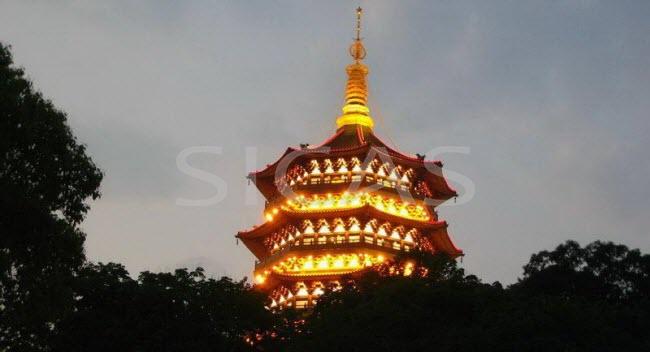
Modern views and Cityscape
Sanjiang kou
The Sanjiangkou Area, the junction area of the three rivers: the Yuyao River, the Fenghua River and the Yongjiang River, is the center of the Ningbo City. For its superior geological and facile transportation conditions, it grew into the heart of Ningbo a long time ago. Back in 821 of the Tang Dynasty, Governor Han Cha of Mingzhou (Ningbo), at the approval of Imperial Government, had the prefecture government relocated to this area. In this area, city walls and moats were then constructed and government offices established which marked the initial shaping of Ningbo City. Therefore, the Sanjiangkou Area can be said to be the birthplace of this historical city.
Sanjiangiou Cultural Zone covers an area of 1.5 hectares, consisting of Jiangnan Quarter, Jiangbei Quarter and Jiangdong Quarter, which respectively take on three different features, namely, modern, western and traditional. It is the mainstay of the Three-Rivers Cultural Corridor undergoing construction. In the Cultural Zone stand a great number of skyscrapers and cluster an even bigger number of businesses, thus giving a thriving and prosperous ambiance. At night, when the city is brightly lighted by the numerous colorful lamps and neon lights, the three bridges over the rivers are turned into three dragons mounting the clouds and riding the mist. Visitors to this area may find themselves in dreamland and get a feel of the animating and booming city.
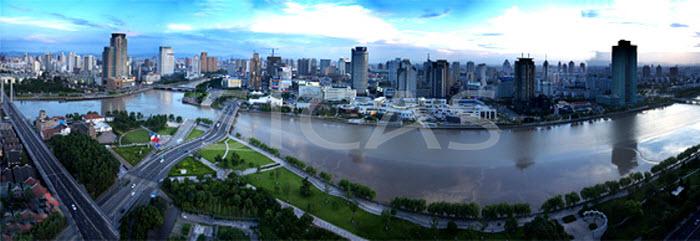
Nanxi Hot Spring
Nanxi Hot Spring lies in Nanxi Village of Shenzhen Township, 76 kilometers to the downtown of Ninghai County. With a forest resource of 9,627 hectares or 9,627 mu, the scenic area was approved by the State Department of Forestry in 1991 as a national forest park, and thus it became one of the ten best scenic spots in Ningbo. As a well-known hot-spring resort in Zhejiang, the park is feattured in its peaceful mountains, clear waters and dense forests.
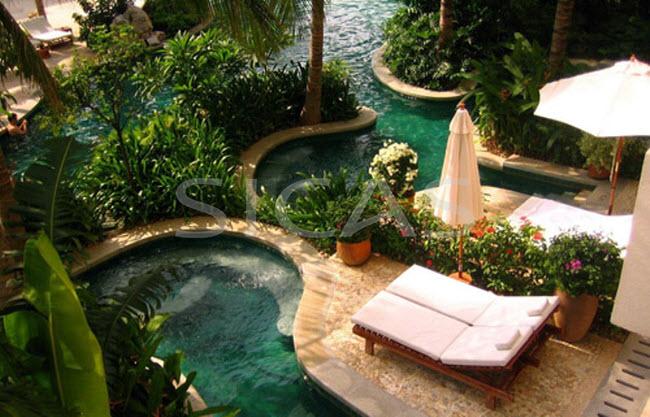
Dongqian Lake
Dongqian Lake is situated in southeastern Ningbo and 15 kilometers off the heart of the city. The site covers a planned area of 234 square kilometers and enjoys a loud reputation for an intoxicating blend of its picturesque mountains and clear waters with rich cultural heritages. This is a great recreational spots, vacationing and entertainment. The lake is known as the largest natural fresh-water lake in Zhejiang. Its water area occupies 19.89 square kilometers, four times that of the West Lake in Hangzhou. A vestige of a sea during the geological age, the lake is now 6.5 kilometers wide, 8.5 kilometers long and 45 kilometers in girth.
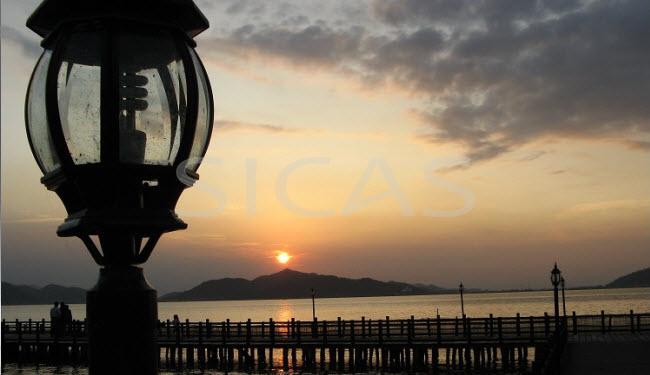
Tianyi Square
Tianyi Square is the largest one-stop shopping and commercial plaza in Ningbo, extending from Zhongshan Road in the north and Yaohang Street in the south, and starring from Rixin Street in the east and ending at Kaiming Street in the west. This well-designed business center has various shops, department stores and super markets. Here, travelers can find whatever they want, such as clothes, cosmetics, home appliances, and tourist souvenirs etc.
